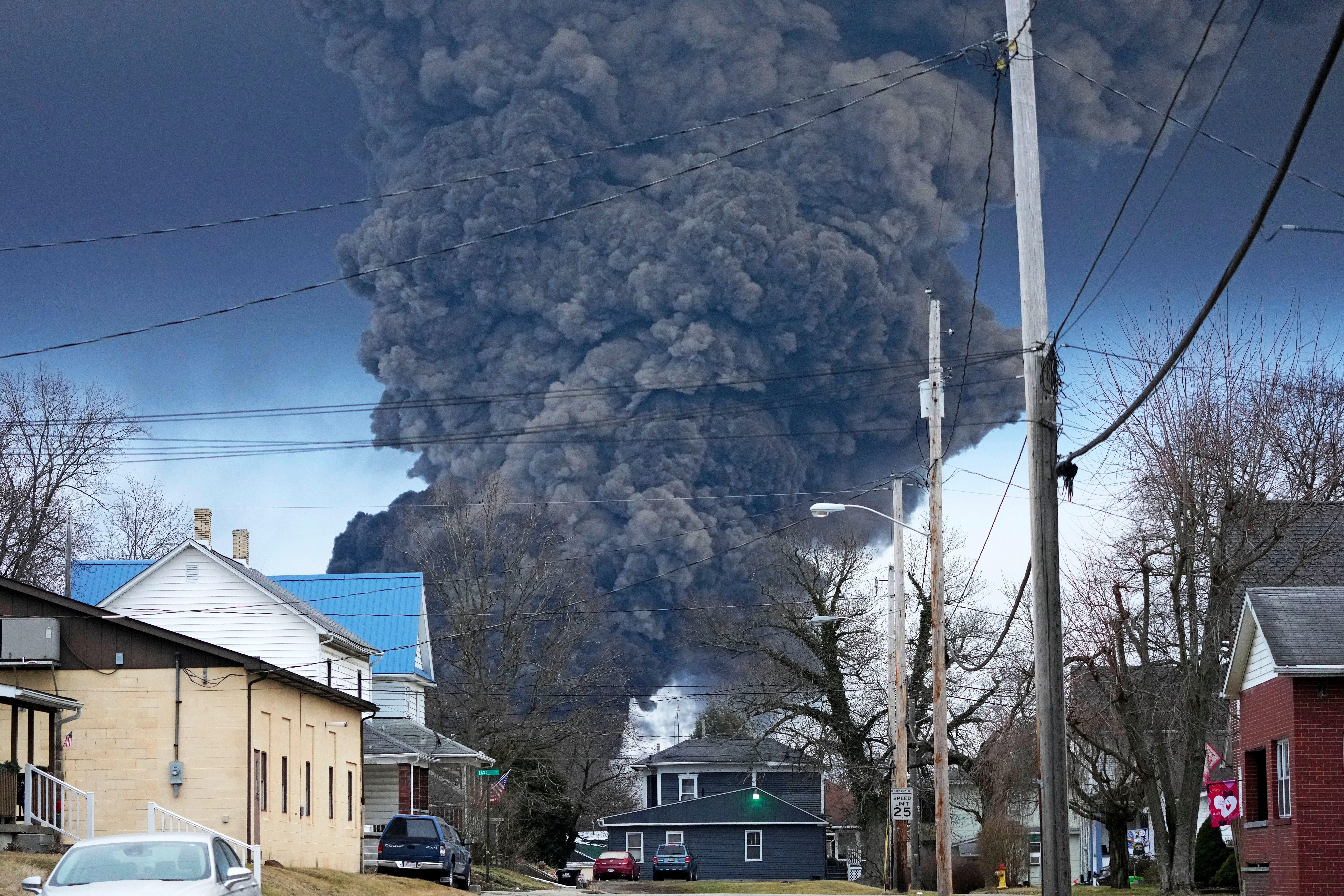Ohio toxic train derailment: Couple and toddler diagnosed with respiratory infections
Local residents, Chris and Jamie Wallace, and their toddler went to hospital with breathing issues
Your support helps us to tell the story
From reproductive rights to climate change to Big Tech, The Independent is on the ground when the story is developing. Whether it's investigating the financials of Elon Musk's pro-Trump PAC or producing our latest documentary, 'The A Word', which shines a light on the American women fighting for reproductive rights, we know how important it is to parse out the facts from the messaging.
At such a critical moment in US history, we need reporters on the ground. Your donation allows us to keep sending journalists to speak to both sides of the story.
The Independent is trusted by Americans across the entire political spectrum. And unlike many other quality news outlets, we choose not to lock Americans out of our reporting and analysis with paywalls. We believe quality journalism should be available to everyone, paid for by those who can afford it.
Your support makes all the difference.A couple and their three-year-old child are suffering from upper respiratory infections in the wake of the toxic train derailment in East Palestine, Ohio.
Local residents, Chris and Jamie Wallace, and their toddler, went to hospital with breathing issues which they said developed after the train crash.
“I knew something was different when we left town and there was that chemical smell in your nose, as if you were in the bathroom cleaning with bleach and you walk out and you still smell that bleach in your nose,” Jamie Wallace told NewsNation on Tuesday.
Around 50 train cars derailed on 3 February, including 20 cars carrying hazardous substances.
More than 2,000 residents were evacuated due to health concerns over the chemical leak but have since been allowed to return.
Some of the crashed cars were carrying toxic chemicals – vinyl chloride, butyl acrylate, ethylhexyl acrylate, and ethylene glycol monobutyl ether – which were released into the air, surface soils, and surface waters.
Five rail car tankers of vinyl chloride were intentionally breached by crews, and the substance diverted to an excavated trench.
Vinyl chloride, which is used to make plastic pipes, wires and packaging, is associated with an increased risk of a rare form of liver cancer, hepatic angiosarcoma, along with primary liver cancer, brain and lung cancers, lymphoma, and leukemia, Cancer.gov reports.
A controlled detonation was then carried out to prevent an explosion, sending noxious black clouds billowing across the area. One of the substances released was phosgene, a gas deployed as a chemical weapon in the First World War.

Environmental remediation work was ongoing, Norfolk Southern said, along with air, soil, and water monitoring in coordination with state and federal agencies. Regulators have said that the air quality is safe and drinking water supplies have not been affected in surrounding communities.
The US Environmental Protection Agency (EPA) said on Tuesday that it carried out “robust air-quality testing” and had “not detected any levels of health concern that can be attributed to the incident”.
But in the 12 days since the disaster, troubling reports have emerged. Several residents have spoken of headaches and feeling sick, the Associated Press reported.
One resident in the town of North Lima, around ten miles from the train derailment, also reported that her six chickens died in the days after the fire.
It was not the only report of sick animals. Taylor Holzer, a registered foxkeeper who lives outside the evacuation perimeter, told WKBN that all of his foxes were sick and one had died. Dead fish were also observed floating in local streams.




Join our commenting forum
Join thought-provoking conversations, follow other Independent readers and see their replies
Comments